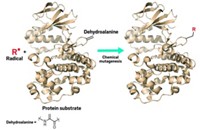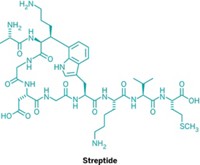Advertisement
Grab your lab coat. Let's get started
Welcome!
Welcome!
Create an account below to get 6 C&EN articles per month, receive newsletters and more - all free.
It seems this is your first time logging in online. Please enter the following information to continue.
As an ACS member you automatically get access to this site. All we need is few more details to create your reading experience.
Not you? Sign in with a different account.
Not you? Sign in with a different account.
ERROR 1
ERROR 1
ERROR 2
ERROR 2
ERROR 2
ERROR 2
ERROR 2
Password and Confirm password must match.
If you have an ACS member number, please enter it here so we can link this account to your membership. (optional)
ERROR 2
ACS values your privacy. By submitting your information, you are gaining access to C&EN and subscribing to our weekly newsletter. We use the information you provide to make your reading experience better, and we will never sell your data to third party members.
Biological Chemistry
Rare Sugar Linkage Revealed
Chemical Biology: Stable modified peptide leads team to a promising enzyme for synthesis
by Carmen Drahl
January 3, 2011
| A version of this story appeared in
Volume 89, Issue 1

A rare modification to peptides—sugar attachment through the sulfur of cysteine—may be more common than chemists have suspected, according to a study in Nature Chemical Biology (DOI: 10.1038/nchembio.509). The work also uncovers an enzyme that could build long-lasting sugar-peptide conjugates that could be used to generate antibodies and study antibiotics.
Graduate student Trent J. Oman, professor Wilfred A. van der Donk, and colleagues at the University of Illinois, Urbana-Champaign, stumbled on the special sulfur linkage while studying sublancin, a naturally occurring bacterial peptide whose biosynthesis was a mystery. Sublancin was thought to belong to a class of peptide antibiotics called lantibiotics, but the microbe that makes it doesn’t have any lantibiotic-making machinery, van der Donk explains.
His team’s mass spectrometry data show that sublancin lacks the dehydroalanine amino acid residue that is typical of lantibiotics. Instead, it has glucose attached to one of its five cysteine thiols, making it an S-linked glycopeptide. Few S-linked glycopeptides have been discovered, but protein database searches suggest sublancin isn’t a fluke—it appears to be part of a family of yet to be studied peptides. “You’d think that by 2010, many of these peptides would have been found, but maybe we weren’t looking for the right things,” van der Donk says.
In addition, the team observed that the enzyme attaching glucose to sublancin accepts a variety of building blocks, including different sugars. This could make the enzyme valuable for chemical synthesis, van der Donk says. S-linked glycopeptides are more stable than other types of glycopeptides, so chemists have sought them as potential drugs and as tools for biological research, in particular to generate antibodies that track glycopeptides, he explains.
The team would still like to find out how the enzyme selectively installs a sugar on just one of sublancin’s five cysteines and hopes to use analogs to learn how sublancin works as an antibiotic.
The sugar-installing enzyme has exciting potential as a synthetic tool, glycochemist Linda C. Hsieh-Wilson of Caltech agrees. “Nature continues to surprise us with its chemical ingenuity.”





Join the conversation
Contact the reporter
Submit a Letter to the Editor for publication
Engage with us on Twitter